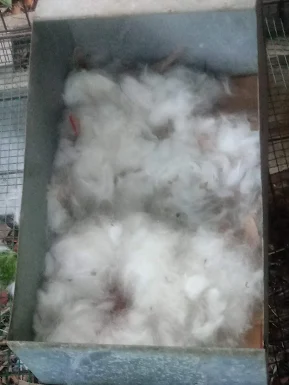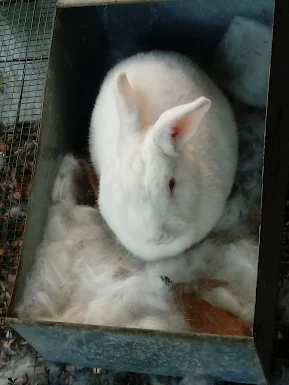Breeding rabbits can be a rewarding experience, whether you’re interested in starting a small-scale farm, participating in rabbit shows, or simply expanding your furry family. However, it’s crucial to approach this task with knowledge and responsibility. This guide will walk you through the basics of rabbit breeding for beginners.
Understanding Rabbit Breeding
Rabbits are prolific breeders, known for their quick reproduction rates. A doe (female rabbit) can start breeding at 4 to 6 months old, while a buck (male rabbit) is ready at around 6 to 7 months. Rabbits don’t have a specific breeding season, and a doe can produce a litter of 4 to 12 kits (baby rabbits) every 30 to 31 days.
Antique literature regarding rabbit breeding will claim that does can make hundreds of pounds of rabbit meat a year. While true to a certain extent, a breeder would have to have the absolute highest quality of food and excellent record keeping to maintain that kind of output in a rabbitry.
Choosing the Right Rabbits
The first step in rabbit breeding is selecting the right pair. Choose healthy, well-tempered rabbits with good genetic traits. If you’re breeding for specific purposes like shows or meat production, consider the breed’s characteristics. For instance, New Zealand Whites and Californians are popular for meat, while Holland Lops and Netherland Dwarfs are favored for shows.
Preparing for Breeding
Before breeding, ensure your rabbits are in optimal health. A balanced diet rich in weeds and grasses, pellets, and fresh water is essential. To read Ten’s guide to growing your own rabbit food on Florida, click here. Regular vet check-ups are also crucial to detect any potential health issues. Heat has been known to decrease fertility in male rabbits, which is why it might not be favorable to attempt breeding in the summer.
The Breeding Process
When ready to breed, always bring the doe to the buck’s cage. This is because does can be territorial and may become aggressive if the buck is introduced into their space. Mating usually happens quickly, and the buck will typically fall off the doe when it’s over. At this point it may be beneficial to take the doe back her to her pen for a few hours, then reunite the two again later in the day or the next day to ensure fertilization.
Pregnancy and Nesting
A rabbit’s gestation period is around 28 to 31 days. As the doe nears the end of her pregnancy, provide a nesting box filled with hay or straw. She will also pull fur from her body to line the nest. This behavior is a good sign that the birth is imminent.
Right after mating the rabbits, we recommend utilizing the calender on your smart device to set up a reminder to put the nest box in the doe’s cage at exactly 28 days from breeding. This ensures the nest isn’t in her cage too soon, which will make it messy, and should give her plenty of time to pull fur to line the nest.
You never want her to have her kits on the hard wire floor of her cage. While we have saved litters in the past, we have lost kits from this, so make your sure your nest box is in place on exactly day 28.

Post-Birth Care
Once the kits are born, it’s important not to disturb the nest. Does only feed their young once or twice a day, usually at night, so don’t be alarmed if she seems to be ignoring them. Check the kits daily for any signs of distress or neglect, but try to minimize handling them during the first week.
Weaning and Growth
Kits start to open their eyes at about 10 days old and will begin exploring and nibbling solid food. Weaning usually occurs around 4 to 6 weeks old. After weaning, it’s best to separate the doe from the kits.
As soon as the kits begin to jump out of the nest box, we move the kits and the doe to a movable ground cage called a rabbit tractor. This is usually around week 3. The ground cage is moved daily, and the doe and the kits are given pellets and plants to eat. This ensures that she is still able to give them milk and that she teaches them which plants are good for eating. At around week 5, she is removed from their ground cage and returned to her cage, where she will be ready for rebreeding.
Final Thoughts
Breeding rabbits is a commitment that requires time, resources, and a deep understanding of rabbit behavior and health. Always breed responsibly and ensure you have adequate space and resources to care for the potential kits. Remember, every rabbit deserves a safe, loving home. If you’re unsure about any aspect of rabbit breeding, consult with a vet or an experienced breeder. Happy breeding!
